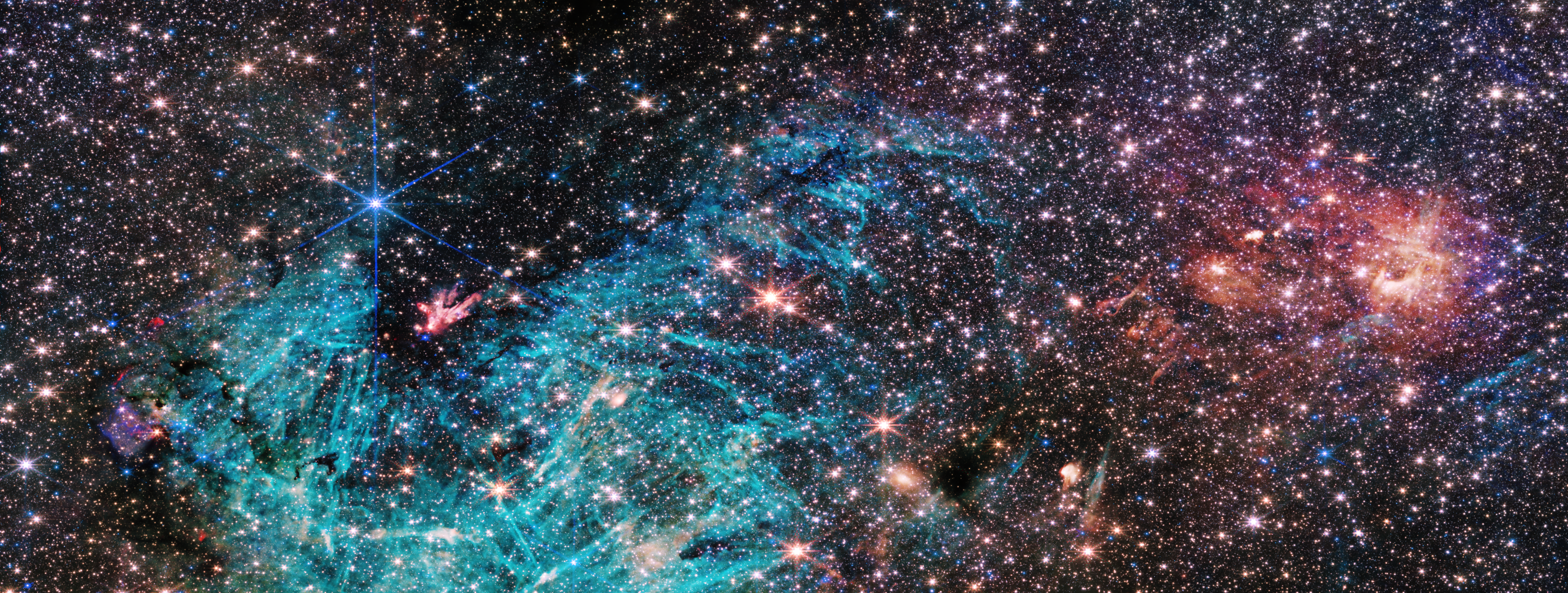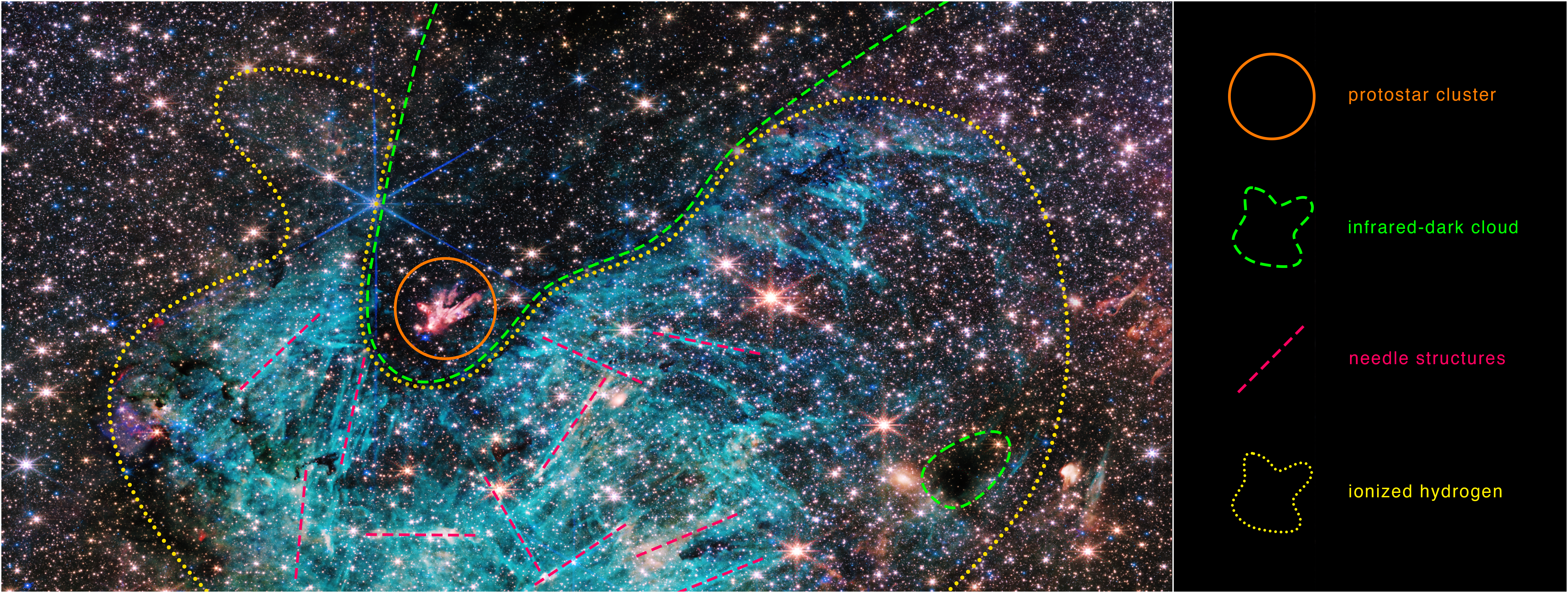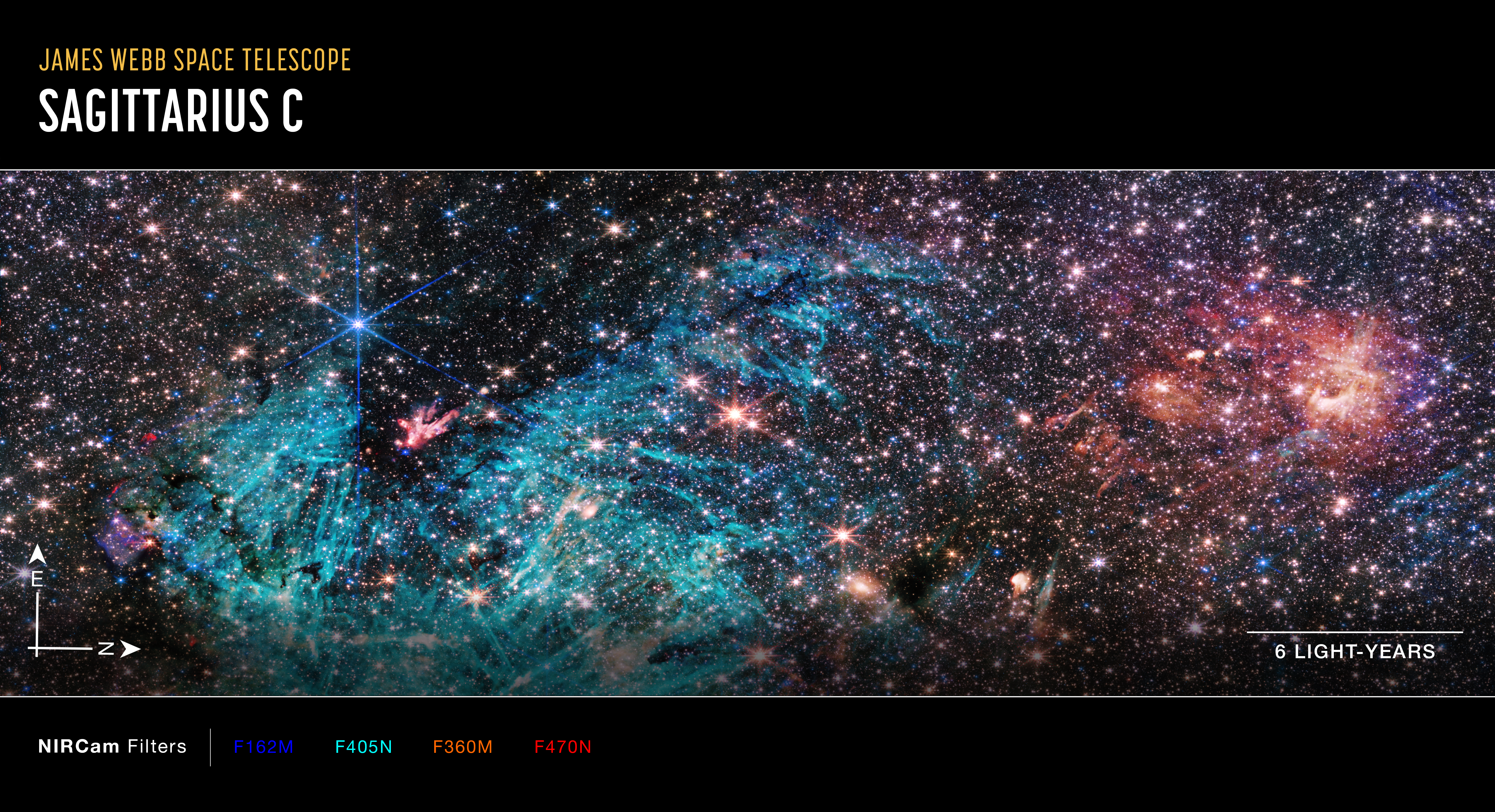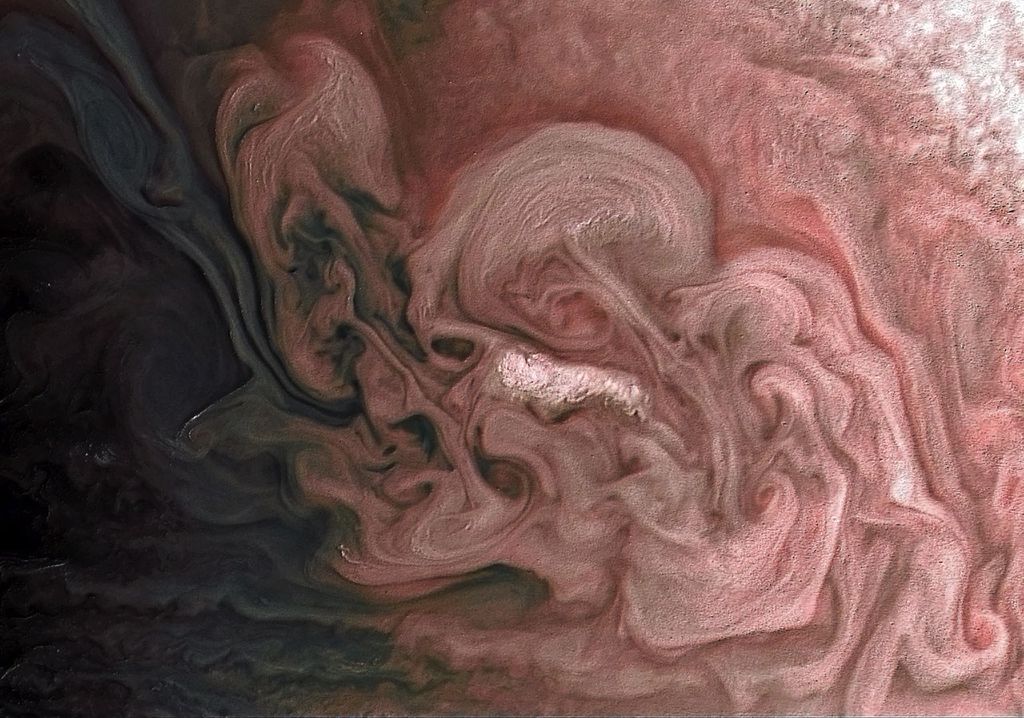1 min read
Sagittarius C (NIRCam Image)

The full view of the James Webb Space Telescope’s NIRCam (Near-Infrared Camera) instrument reveals a 50 light-years-wide portion of the Milky Way’s dense center. An estimated 500,000 stars shine in this image of the Sagittarius C (Sgr C) region, along with some as-yet unidentified features.
A vast region of ionized hydrogen, shown in cyan, wraps around an infrared-dark cloud, which is so dense that it blocks the light from distant stars behind it. Intriguing needle-like structures in the ionized hydrogen emission lack any uniform orientation. Researchers note the surprising extent of the ionized region, covering about 25 light-years.
Click to view a labeled version of the image.
A cluster of protostars – stars that are still forming and gaining mass – are producing outflows that glow like a bonfire at the base of the large infrared-dark cloud, indicating that they are emerging from the cloud’s protective cocoon and will soon join the ranks of the more mature stars around them. Smaller infrared-dark clouds dot the scene, appearing like holes in the starfield.
Researchers say they have only begun to dig into the wealth of unprecedented high-resolution data that Webb has provided on this region, and many features bear detailed study. This includes the rose-colored clouds on the right side of the image, which have never been seen in such detail.
About the Object
- R.A. PositionR.A. PositionRight ascension – analogous to longitude – is one component of an object's position.17:44:40.30
- Dec. PositionDec. PositionDeclination – analogous to latitude – is one component of an object's position.-29:28:14.93
- ConstellationConstellationOne of 88 recognized regions of the celestial sphere in which the object appears.Sagittarius
- DistanceDistanceThe physical distance from Earth to the astronomical object. Distances within our solar system are usually measured in Astronomical Units (AU). Distances between stars are usually measured in light-years. Interstellar distances can also be measured in parsecs.26,000 lightyears
- DimensionsDimensionsThe physical size of the object or the apparent angle it subtends on the sky.This image is about 5.8 arcminutes across (44 lightyears)
About the Data
- Data DescriptionData DescriptionProposal: A description of the observations, their scientific justification, and the links to the data available in the science archive.
Science Team: The astronomers who planned the observations and analyzed the data. "PI" refers to the Principal Investigator.This image was created with Webb data from proposal: 4147 (S. Crowe). Image Processing: Alyssa Pagan (STScI)
- InstrumentInstrumentThe science instrument used to produce the data.NIRCam
- Exposure DatesExposure DatesThe date(s) that the telescope made its observations and the total exposure time.22 Sept 2023
- FiltersFiltersThe camera filters that were used in the science observations.F162M, F360M, F405N, F470N
- Object NameObject NameA name or catalog number that astronomers use to identify an astronomical object.Sagittarius C
- Release DateNovember 20, 2023
- Science ReleaseNASA’s Webb Reveals New Features in Heart of Milky Way
- CreditImage: NASA, ESA, CSA, STScI, Samuel Crowe (UVA)

These images are a composite of separate exposures acquired by the James Webb Space Telescope using the NIRCam instrument. Several filters were used to sample specific wavelength ranges. The color results from assigning different hues (colors) to each monochromatic (grayscale) image associated with an individual filter. In this case, the assigned colors are: Blue: F162M, Cyan: F405N, Orange: F360M, Red: F470N

Related Images & Videos

Sagittarius C (Annotated NIRCam Image)
Approximate outlines help to define the features in the Sagittarius C (Sgr C) region. Astronomers are studying data from NASA’s James Webb Space Telescope to understand the relationship between these features, as well as other influences in the chaotic galaxy center. Read the...

Sagittarius C (NIRCam Compass Image)
This image of Sagittarius C (Sgr), captured by Webb’s Near-Infrared Camera (NIRCam), shows compass arrows, scale bar, and color key for reference. The north and east compass arrows show the orientation of the image on the sky. Note that the relationship between north and east on...
Share
Details
Laura Betz
NASA’s Goddard Space Flight Center
Greenbelt, Maryland
laura.e.betz@nasa.gov
NASA, ESA, CSA, STScI, Samuel Crowe (UVA)






























